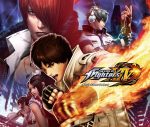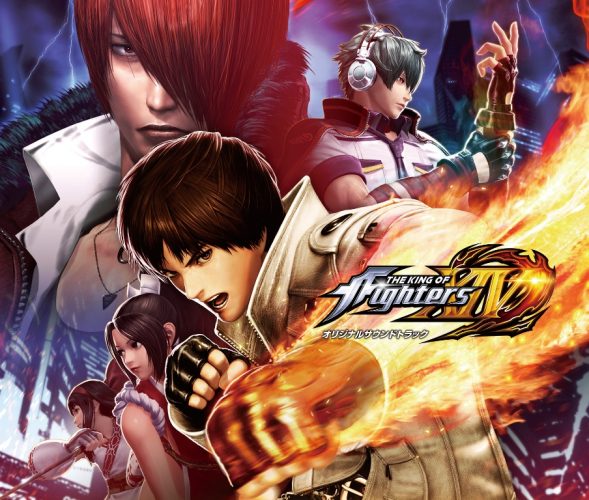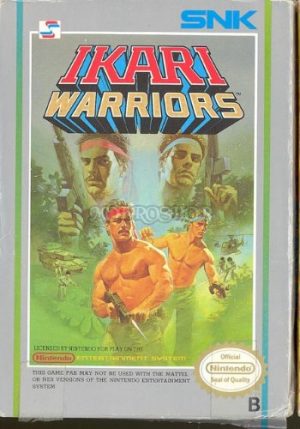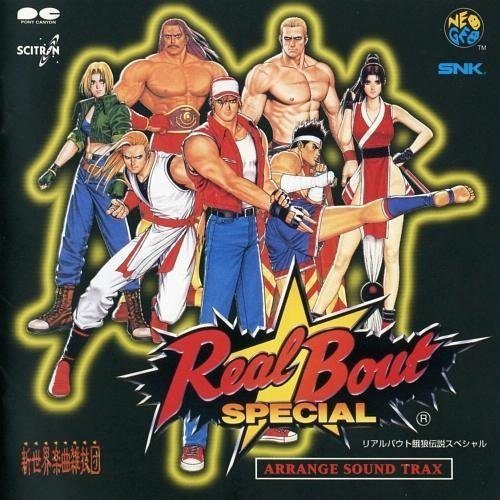

For the last twenty or so years, SNK has gone through a very unique transformation from where it started to where it is presently. As some of you readers (may) already know, they released a 40th anniversary collection for the Switch demonstrating that they’ve been around longer than twenty years. So, how did it all come about? How did they make one of the 90’s most elusive consoles? How did it help create one of Street Fighter’s biggest rivals in the East? Read today’s Editorial Tuesday to find out!
Shin Nihon Kikaku
Prior to starting up SNK, Eikichi Kawasaki, the company’s founder, was running both a café and a lumber company in Osaka. When he was consulting with an electronics company in Kobe in gaining capital, he came up with the name Shin Nihon Kikaku, or New Japan Project in Japanese, in 1973 for his own electronics company. At the end of the decade, arcade games were progressively becoming popular in Japan, so SNK went into that respective business. Their debut game was Senkan Yamato, a block crushing game akin to Atari’s Breakout (originally largely programmed by Steve Wozniak, co-founder of Apple). For awhile, they managed to get the license to make Space Invaders from Taito, and produce the game for Japanese markets. At they progressed into the 80’s, they made Ozma Wars, a clone of Space Invaders. Ozma Wars is reportedly considered one of the first games to feature health bars, which is now featured in most video games to this day.
TNK III/T.A.N.K./Ikari Warriors

One of the first breakout hits in the eighties beyond Ozma Wars is 1985’s TNK III, or T.A.N.K. outside of Japan. As the title suggests, it’s a game that allows players to control a tank and just blow stuff up. Since many overhead rail shooters were popular at that time, TNK III takes it in a different direction and uses a free controlling tank instead. This was the game that first featured Ralf Jones, who would later be used again in Ikari Warriors and King of Fighters. Thanks to its success, it paved the way for Ikari Warriors (or simply Ikari, meaning “rage,” in its native Japanese) which came out the year after TNK III. As opposed to taking place in a tank, you play as two typical 80’s shirtless action heroes who shoot everything in sight. What made this game unique compared to other shooting games at the time was that as opposed to being a side-scroller such as Contra, Ikari Warriors uses an overhead view where players can move their character around the screen in eight directions on a joystick as they progress. In addition to bringing back Ralf, it introduces Clark as a co-player. Like Ralf, Clark is later brought back as a character for King of Fighters. Thanks to its success, it got two sequels.
Athena and Psycho Soldier

In 1986, along with TNK III and Ikari Warriors, SNK also released another distinguishing classic, Athena, an action RPG originally for the arcade, but later got a Famicom release. As opposed to playing as the Greek Goddess of War, the Athena featured in this game is the Princess of the Victory Kingdom, and she sets out on an adventure to defeat the evil Emperor Dante. Like many action/adventure RPGs of its time such as Zelda and Castlevania, players are required to collect certain items and level up in order to progress. A year later, Athena got a sequel with Psychic Soldier, which takes place in modern Japan. The Athena featured in this game is Athena’s descendant, Athena Asamiya, who you may know in the King of Fighters franchise. As the title suggests, she’s more of a psychic oriented character as opposed to being a goddess, and the game mechanics are changed to suit mainstream side scrollers of the 80’s.
Taking on Capcom’s Street Fighter in the East with Some Fatal Fury and the Art of Fighting

As we shared in previous Editorial Tuesdays such as our History of Fighting Games, though SNK’s fighting games have more of a cult following the West, it rivaled Street Fighter in the East, most notably in Japan and South Korea. Shortly before King of Fighters became their staple franchise, their breakout fighting game was 1991’s Fatal Fury, or Garou Densetsu in Japan. What’s ironic is that Takashi Nishiyama, the main creator of Fatal Fury, happens to be the main creator of Street Fighter. In a way, Nishiyama created Fatal Fury in a manner that he saw as his own personal own to Street Fighter. Around the same time, Hiroshi Matsumoto, who also worked on the first Street Fighter game, led the development for another fighting game for SNK, Art of Fighting, or Ryuko no Ken in Japan. Street Fighter II helped pave way for players to play as more than one character of a different fighting style, and Mortal Kombat introduced the fatality. As for what SNK’s fighters did, Fatal Fury introduced two-dimensional stages, and as for Art of Fighting, it introduced zooming in and out depending on the range, bruising, and super combos. As SNK found success in Japan, it allowed them to go toe-to-toe with Capcom as one of the best providers of fighting games. Later on, they would produced other unique fighters such as Samurai Shodown and Last Blade. Eventually, it led them to create their number one fighting game franchise, King of Fighters. After Ryo was introduced in another Fatal Fury game, SNK thought it would be a cool idea if they made a game by combining some of their franchises. Beyond including characters from Fatal Fury and Art of Fighting, they took characters from Ikari Warriors and Psychic Soldiers. In addition, it introduced some original characters such as Kyo Kusanagi, who would later be established as the main character. Since 1994, it’s been going non-stop.
Neo Geo/MVS Arcade
Though the Genesis and Super Nintendo dominantly led the console wars of the 90’s in the West (with the Super Nintendo and PC Engine going neck and neck in Japan), there were other consoles that existed and SNK’s Neo Geo was one of them. Fatal Fury, Art of Fighting, and Samurai Shodown did get released on the SNES and Genesis, you didn’t get arcade perfect ports! While arcade perfect titles have existed since the day of the Dreamcast, Neo Geo was one of the first to truly capture that since its hardware was pretty much the same as their MVS (Multi Video System) arcade hardware. Due to its high cost, it initially debuted as a console for rent in Japan. After some demand was met, it was eventually released more as a novelty retail system when it debuted at $650 in 1990. So if you inflate that to 2018 US dollars, it would equate to $1253, which would make that slightly more than double! And the price of the console was just the tip of the iceberg. Depending on the memory size of the ROM cartridges, software prices could range from $100-$300! While 100MB and 300MB are undeniably small in today’s technology, but nearly 30 years ago, it was like getting a 256GB iPhone! Considering how some of their games are now progressively becoming rare, some games now go up to $1,000USD+! Though the console’s production was officially discontinued in 1997, games were still being made for it up to 2004! Due to piracy and emulation, SNK during its transitional period decided to officially not make anymore games for the hardware. Unlike the Mega Drive/Genesis which didn’t get a CD add-on, the Neo Geo CD was sold as a separate console. Though it was much cheaper than its cartridge counterpart, it was notorious for its slow loading times to the point that you could probably make (maybe but highly possibly) over 9,000 sandwiches within that period! They also released a Neo Geo Pocket in the late-90’s, but was only a cult hit like its main console. As of summer 2018, the Neo Geo also has its own mini-console for gamers to enjoy.
SNK Playmore
Despite its popularity in Japan, SNK faced bankruptcy in 2000, and a percentage of fans blamed piracy and Neo Geo emulation as to why. Initially, they were bought by Aruze, a pachinko company, who naturally used the KoF franchise as a pachinko game, and did little market the actual video games. SNK founder Eikichi Kawasaki resigned and started Playmore, while other former employees joined Capcom or joined Takashi Nishiyama’s Dimps. The rights to King of Fighters briefly went to Eolith, a South Korean company, as they produced the 2001 and 2002 editions. By the end of 2001, Kawasaki used Playmore as a means to regain the intellectual rights to SNK’s properties. Shortly after, Kawasaki continued the process of rebuilding his house by regaining former employees and collaborating and/or buying other companies that once worked with SNK.
The Future is Now
After finding success after years of struggling, SNK Playmore decided to drop the Playmore from its name and go back to this roots by bringing back its original tagline, “The Future is Now.” To its loyal fans, it’s a great callback and with their Neo Geo Mini, they continue to show tribute to their legacy by releasing their 40th Anniversary Collection for the Switch. Some classics fans and rookies alike can enjoy are Psychic Soldier, Ozma Wars, Ikari Warriors, and P.O.W. And if they were originally arcade releases, then you’re getting the arcade releases!
Final Thoughts
Even before they broke out with Neo Geo, SNK has plenty of classics that will always be remembered, and there are others that are gone in the annals of history, most notably Last Blade, an amazing fighting game. In addition, there is also King of the Monsters and World Heroes that are worthy of mention within SNK’s unique history. Though SNK continues to give us a new King of Fighters almost every year, some fans are still awaiting other worthy sequels such as Mark of the Wolves 2. As to why we haven’t gotten them, some speculate that the re-branding has ruined such chances. Some of the former key programmers have gone on to work at other companies, or just like Panzer Dragoon RPG, the source code is probably gone. We won’t know for sure, but as long as fans don’t give up, we’ll probably get it some day. If it worked for Shenmue (even if it took 14 years), then it can certainly work for Mark of the Wolves II.
[recommendedPost post_id='212153' url='' title='' img='' class='' widget_title=''] [recommendedPost post_id='236471' url='' title='' img='' class='' widget_title=''] [recommendedPost post_id='211636' url='' title='' img='' class='' widget_title='']
Add Comments